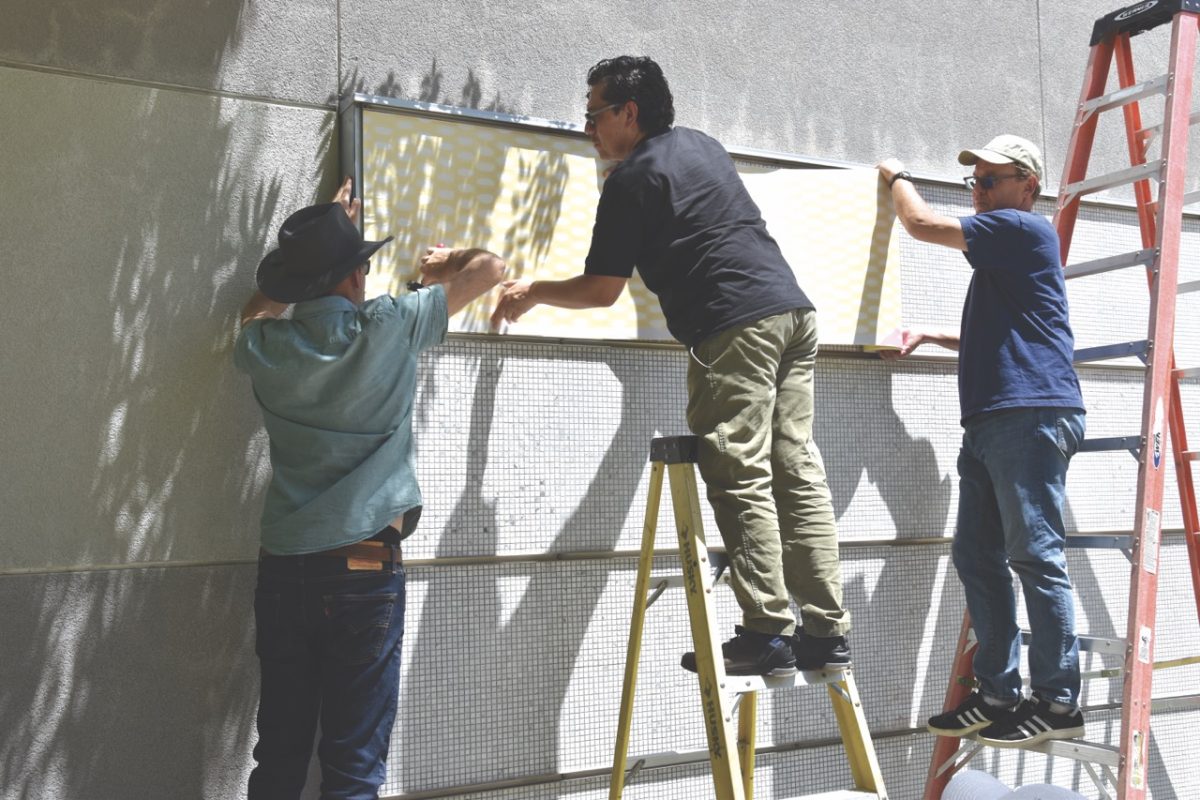The achievement of all California college students is measured by how well students perform on standardized tests. However, numerous studies and surveys conducted over the years show that ethnic minority students do not perform as well as other students.
“I cannot begin to quantify how big of a problem this is,” said District Director of Communications Tim Leong. “But I can tell you that I attend state and national conferences and there are discussions and workshops to learn best practices in addressing the issue.”
Studies indicate African-American and Latino students earn lower grades and are more likely to drop out than white students. Although precisely measuring achievement gaps among enrolled students is difficult due to a lack of disaggregated data, studies generally estimate that African-American and Latino students are 5 to 10 percent less likely to complete a degree, certificate, or transfer.
While 53 percent of all students earn a certificate or degree, only 42 percent of African Americans and 43 percent of Latino students do the same.
Forty-one percent of all community college students transfer to a four-year university. Asian Americans transfer at a rate of 69 percent, 62 percent for white students, 34 percent for African-American students and 31 percent for Latino students.
“We continue to analyze data that shows our African-American and Hispanic students are not achieving success as the same rate as other students,” said Leong. “In order for us to serve all our students, we continue to place this issue on our radar screen and find solutions that work.”
The problem is much more complex than it seems on the surface.
“I think if there was only one reason for the achievement gap issue, it would be easy to define the problem and the solution, but that is not the case,” said Leong. “Simply put, life happens, and obtaining an education after high school becomes a lesser priority because of personal, financial and health issues.”
In spite of numerous laws, initiatives, and reforms both on the national and state level over the past decade, achievement gaps between white students and students of minorities still exist and pose many problems, problems that are still being studied and addressed.
“These priorities were established after we began taking a hard look at our student outcomes and comparing percentages of incoming students by race/ethnicity and completion rates of these same student groups in basic math and English classes and completion rates with degree, certificate attainment and/or transfer,” said LMC Senior Dean Gail Newman. “These studies served to broaden awareness on campus of the disparity in success rates among our diverse student population.”
California isn’t alone in facing this problem. Reportedly, community college organizations from the state and national levels have placed the achievement gap issue within their strategy, illustrating the seriousness of the problem.
“This is not just a local nor a state issue, but a national issue,” said LMC President Bob Kratochvil. “Many types of programs have been developed or are in place to try to address the situation.”
Amongst those programs include the Umoja Learning Community, which seeks to cultivate and enhance the educational experience of all LMC students, especially African-American and first-generation college students. The purpose of Umoja is to provide mentoring, counseling, and culturally-relevant curriculum.
“Programs like Umoja are building relationships with fellow African-American students and developing cohorts so that students do not feel isolated or alone in their academic quest,” said Leong. “Providing customized services and support can make a significant difference with many students. The challenge is that these programs cost money, and we have to figure out ways to sustain these types of programs or find ways to institutionalize them.”
Another program is the Accelerating Male African American Success (AMAAS). Undertaken by Mr. Jeffery Benford, the goal of AMAAS is to increase retention, completion, persistence, and success rates of African-American males attending LMC through intervention strategies, including outreach, orientation, academic network modeling, tutoring, counselor contacts, and mentoring.
“In addition, our programs developed at the College related to STEM (Science, Technology, Engineering, and Math) have shown very positive results related to success for our Latino and African-Americans students,” added Kratochvil.
While the achievement gap has marginally closed in recent years, it still remains a hotly contested issue, and those in charge have been researching, studying, and scrambling for ways to correct this persistent problem. Goals have been set by state commissions to narrow the achievement gap by the year 2020, while concern has been continually expressed on how to help students excel and succeed.
“Access, equality, opportunity, transfer all go hand in hand with closing the achievement gap,” said LMC Student Government Representative Debora van Eckhardt. “I hope legislatures will also contribute to helping restore funds to EOPS and other categorical areas that play an important part to closing the gap. Otherwise, we are doing an injustice to humanity and our students.”






